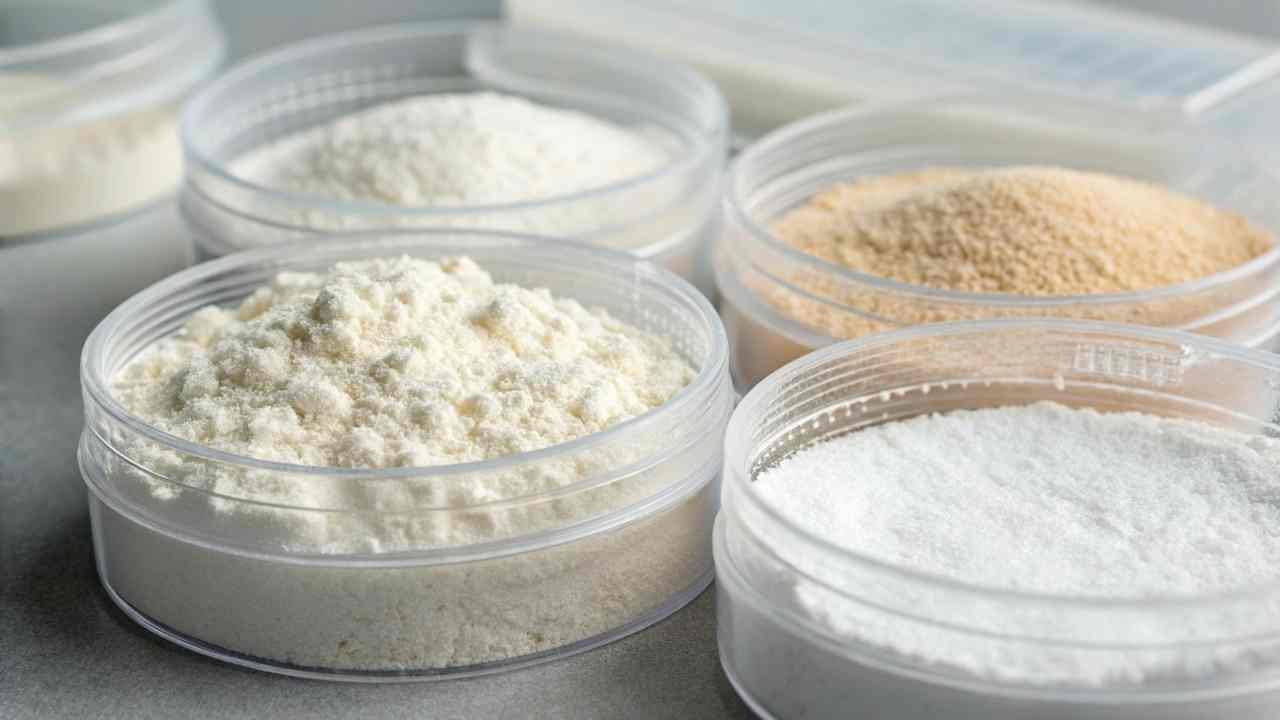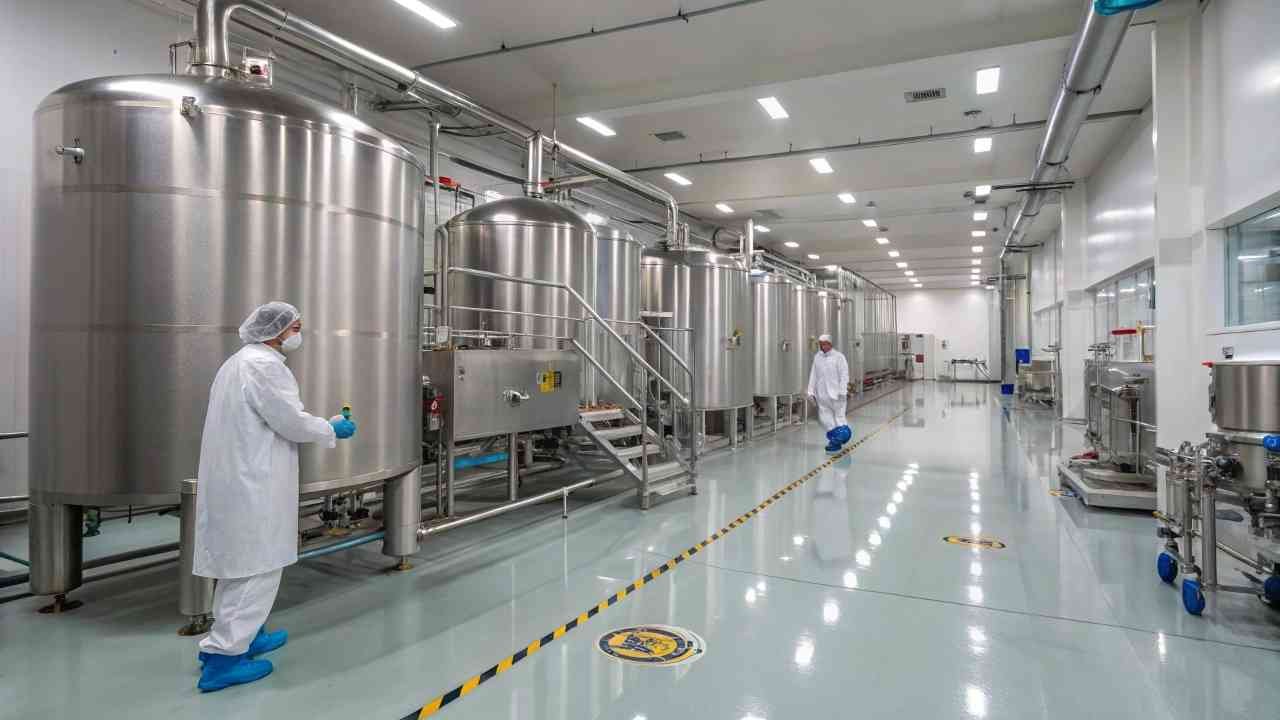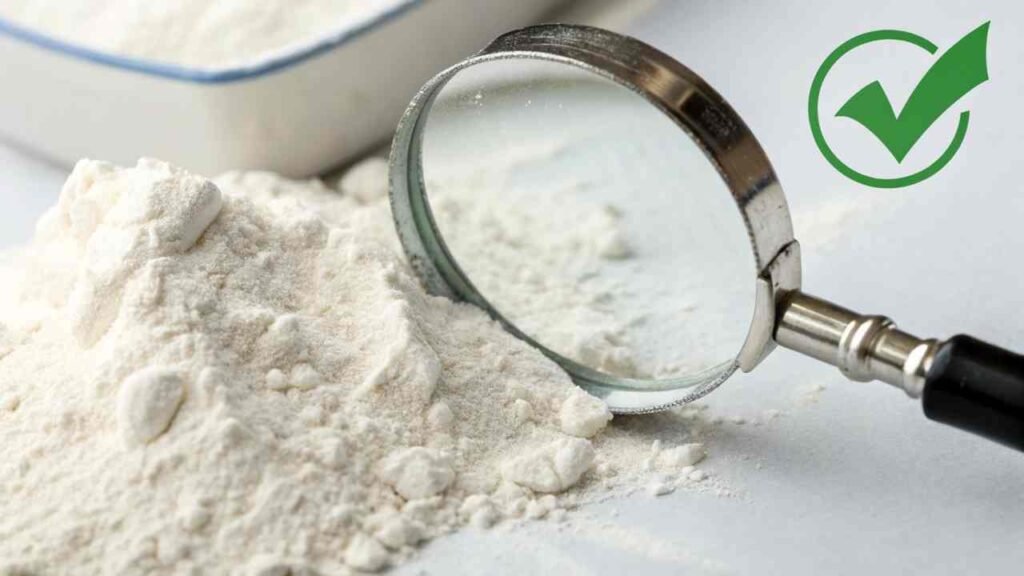Worried about inconsistent thickeners? Unsure how to check xanthan gum quality? Let's clarify how to get the best.
Guarantee xanthan gum quality by checking its grade (food vs. oil), mesh size, and viscosity. Always review the Certificate of Analysis (CoA) and work with suppliers who have strict contamination controls.
At FINETECH, consistent quality is everything. Clients know that bad ingredients ruin products. That's why we focus on verifiable checks. Let's break it down.
What is the difference between food grade and oil grade Xanthan Gum?
See different "grades" of xanthan gum? Confused which one is for you? Let's explain the key difference.
Food grade xanthan gum is highly pure and safe for eating. Oil grade is for industrial use like drilling, focusing on performance in harsh conditions, not food safety.

Choosing the right grade is the first step. The main difference is purity. Food grade xanthan gum is made for human consumption. It must meet strict safety rules, with very low levels of heavy metals and no harmful bacteria. The production process has extra purification steps and happens in a clean facility.
Oil grade is for industrial use, like in oil drilling muds. It is designed for high performance in very hot, salty conditions. It does not go through the same purification and is not safe to eat. The extra purification makes food grade more expensive.
Difference Summary:
| Feature | Food Grade Xanthan Gum | Oil Grade Xanthan Gum |
|---|---|---|
| Use | Foods, Pharmaceuticals | Oil Drilling, Industrial |
| Purity | Very High (Safe to eat) | Lower (Not for consumption) |
| Safety Tests | Required (Microbes, Metals) | Not Required |
| Performance | Texture in food | Viscosity in harsh conditions |
| Cost | Higher | Lower |
How does the mesh size of Xanthan Gum affect its performance?
Problems with lumping or slow dissolving? Does particle size matter? Yes. Let's discuss mesh size.
Mesh size is particle size. Finer (200 mesh) dissolves fast but can clump. Coarser (80 mesh) dissolves slower but disperses easily without lumps, making it more versatile.

Mesh size determines how the powder behaves in liquid. 80 mesh has larger particles, like fine salt. 200 mesh has very fine particles, like flour.
- 200 Mesh (Fine)1: Hydrates very quickly because of its large surface area. This is good if you have high-shear mixing. Without it, the outside of a powder pile gels instantly, trapping dry powder inside and creating lumps ("fish eyes").
- 80 Mesh (Coarse)2: Hydrates more slowly. This gives you time to spread the powder out in the liquid before it thickens, preventing lumps. This makes it the standard, safer choice for most food applications like sauces, dressings, and dry mixes.
The best choice depends on your equipment and product. For most food producers, 80 mesh is the reliable option.
Mesh Size Comparison:
| Feature | 80 Mesh (Coarse) | 200 Mesh (Fine) |
|---|---|---|
| Dissolution | Slower | Faster |
| Lumping Risk | Low | High |
| Common Use | Most foods, dry mixes | High-shear mixing apps |
What does a viscosity test tell you about Xanthan Gum quality?
Product too thin or thick? How do you measure thickening power? A viscosity test gives the answer.
A viscosity test measures thickening power. A higher number means a stronger thickener. Consistent viscosity between batches is a key sign of high quality. Inconsistency is a red flag.

Viscosity measures how well xanthan gum does its job. For my clients, consistent viscosity3 is critical for a consistent final product. The test measures the resistance of a 1% xanthan gum solution in a viscometer. The result is given in centipoise (cps).
- High Viscosity (>1500 cps): Strong thickener. A sign of good quality.
- Low Viscosity (<1200 cps): Weaker thickener. You need to use more, which costs more.
- Inconsistent Viscosity: The worst sign. If batches vary, the supplier has poor quality control.
At FINETECH, we guarantee the viscosity range our clients need. This ensures predictable results every time.
Viscosity Quality Check:
| Result | Meaning |
|---|---|
| High | Strong performance, good quality |
| Low | Weak performance, may be poor quality |
| Inconsistent | Bad quality control, unreliable supplier |
How do you read a Certificate of Analysis (CoA) for Xanthan Gum?
Get a technical CoA and feel lost? Not sure what it means? Let's simplify how to read a CoA.
A Certificate of Analysis (CoA) proves batch quality. Compare the 'Result' to the 'Specification' for key tests: Viscosity (thickening), Mesh Size (physical), and Purity (microbes/metals).

A CoA is a supplier's promise that the batch you received meets quality standards. Look at the "Specification" (the required range) and compare it to the "Result" (the actual test number).
Key things to check on a CoA:
- Viscosity: Does the result show good thickening power and is it consistent with past orders?
- Mesh Size: Is the particle size what you ordered (e.g., 95% through 80 mesh)?
- Heavy Metals & Microbes4: Are lead (Pb) and arsenic (As) levels very low? Are E. coli and Salmonella "Negative"? This confirms food safety.
If all results are "Pass" or within the specification range, the product is good quality and safe. FINETECH provides a CoA with every batch for full transparency.
CoA Quick Check:
| Parameter | Look For | Why It's Important |
|---|---|---|
| Viscosity | Result within spec (e.g., 1200-1600 cps) | Performance/Thickening |
| Mesh Size | Result matches order (e.g., 95% thru 80 mesh) | Dispersibility/Lumps |
| Purity/Safety | "Negative" for microbes, low heavy metals | Food Safety |
How do top suppliers prevent contamination in Xanthan Gum?
Worried about impurities in your ingredients? How do good suppliers stay clean? Let's review contamination prevention.
Top suppliers prevent contamination with GMP (Good Manufacturing Practices), process controls like pasteurization, and HACCP risk management systems. This ensures the final product is pure and safe.

Contamination control5 is a deliberate process. FINETECH only works with factories that master this. The process starts with a clean, sterile fermentation. After fermentation, the gum goes through key purification steps:
- Pasteurization6: Kills the fermentation bacteria.
- Filtration: Removes dead cells and solids.
- Precipitation: Separates the pure gum from the liquid.
The entire factory must operate under GMP (Good Manufacturing Practices), which covers everything from facility cleanliness to employee hygiene. A HACCP (Hazard Analysis and Critical Control Points) plan identifies and controls risks, like using a metal detector or verifying pasteurization temperatures. Finally, the product is tested for the CoA and packed in clean, sealed bags.
Contamination Control Methods:
| Type | Prevention Method |
|---|---|
| Microbiological | Pasteurization, Filtration, GMP, Clean Packaging |
| Chemical | Pure Raw Materials, Controlled Precipitation |
| Physical | Sieving, Metal Detectors, Closed Systems |
Conclusion
Guaranteed xanthan gum quality means checking the grade, mesh, and viscosity. Trust the CoA and choose suppliers with strict contamination controls for consistent, safe products.
-
Explore the advantages of 200 mesh powder for quick hydration and effective mixing in various food products. ↩
-
Learn why 80 mesh powder is the safer choice for preventing lumps in sauces and dressings, ensuring smooth textures. ↩
-
Learn about viscosity measurement techniques and their significance in ensuring product quality and consistency. ↩
-
Exploring this topic will enhance your knowledge of food safety standards and the importance of testing. ↩
-
Understanding contamination control is crucial for maintaining product quality and safety in manufacturing processes. ↩
-
Exploring pasteurization will provide insights into its importance in eliminating harmful bacteria and ensuring food safety. ↩


